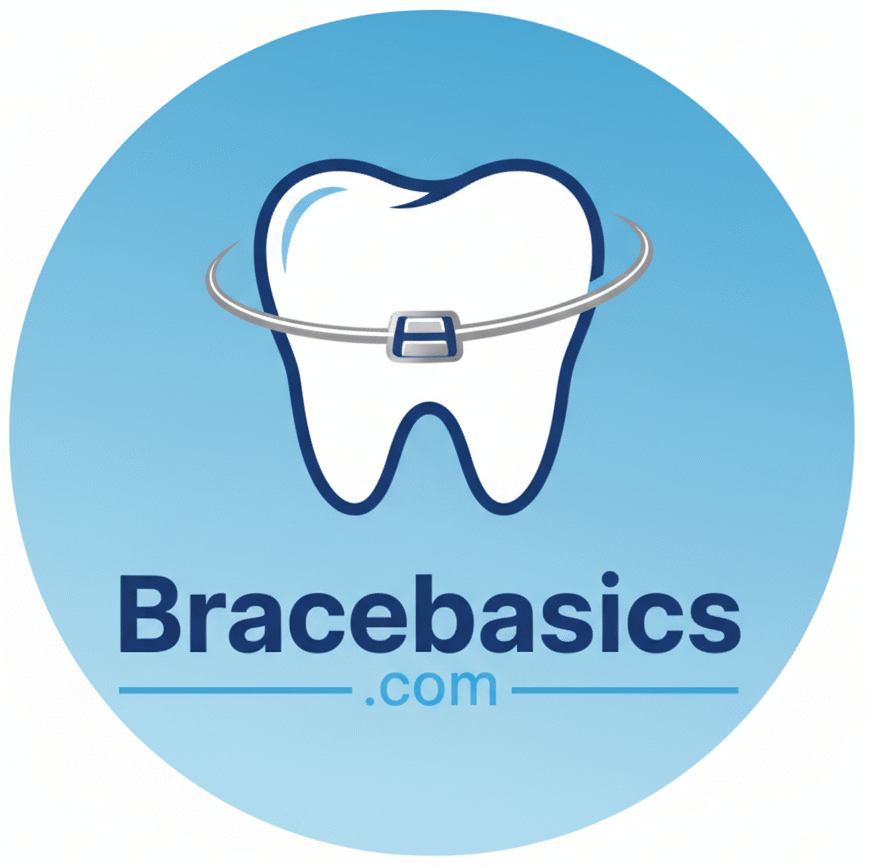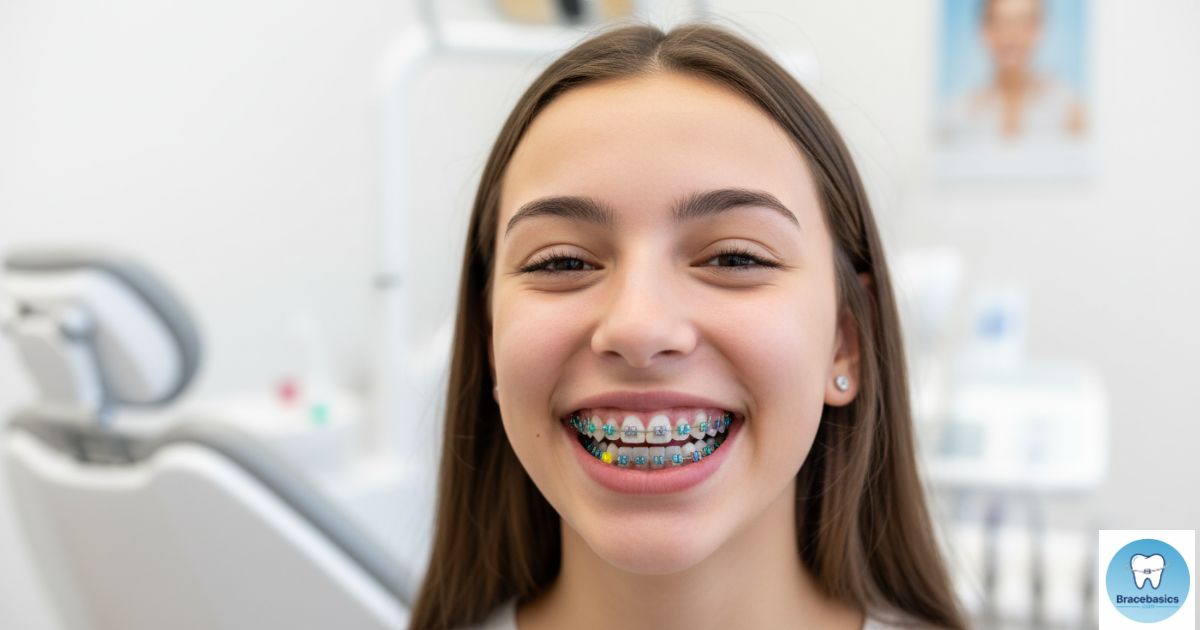As an orthodontist, I often get asked: “Why use rubber bands with braces?” or “What Do Rubber Bands Do for Braces?” Patients understand brackets and wires, but elastics often feel confusing. Rubber bands, also called orthodontic elastics, are small yet powerful tools in the teeth alignment process. They apply targeted force to help move teeth into their ideal position.
In this article, you’ll learn what rubber bands for braces actually do, why your orthodontist prescribes them, the types of braces bands, how long to wear them, possible side effects, and alternatives. By the end, you’ll know exactly how elastics fit into your braces treatment and why following orthodontist recommendations is the key to a confident smile.
What Do Rubber Bands Do for Braces?
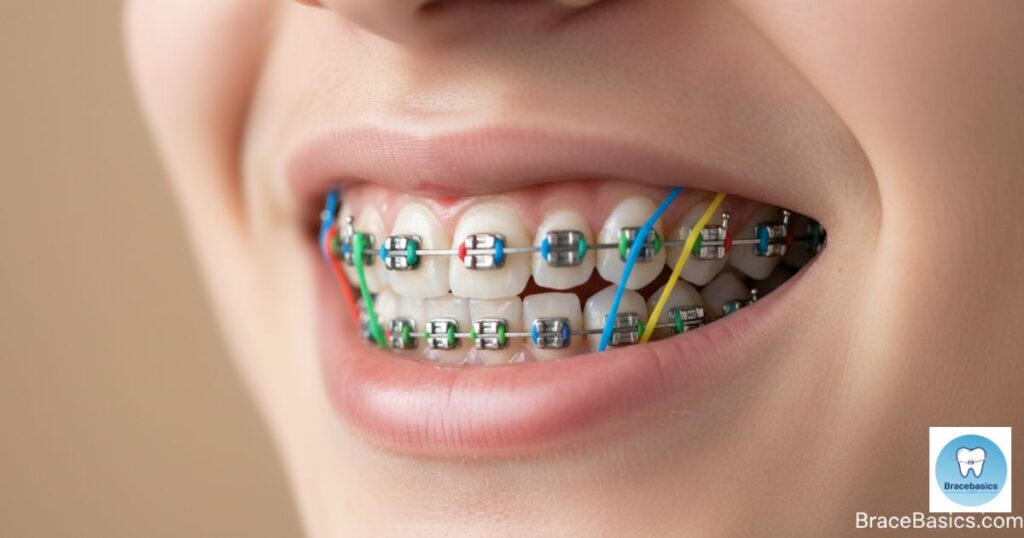
Rubber bands, or ligatures braces, work alongside brackets and wires to correct jaw alignment and bite issues. Braces alone can move teeth, but sometimes that movement isn’t enough. Rubber bands provide extra tension and pressure, guiding the jaw so the top and bottom teeth meet properly.
For example, if you have an overbite, diagonal rubber bands braces may be placed from top front teeth to lower molars. This force gradually pulls the bite into balance. This is why orthodontist may prescribe rubber bands even months after braces are on. Without elastics, achieving perfect bite correction braces results is nearly impossible.
Types of Elastics in Braces
Force
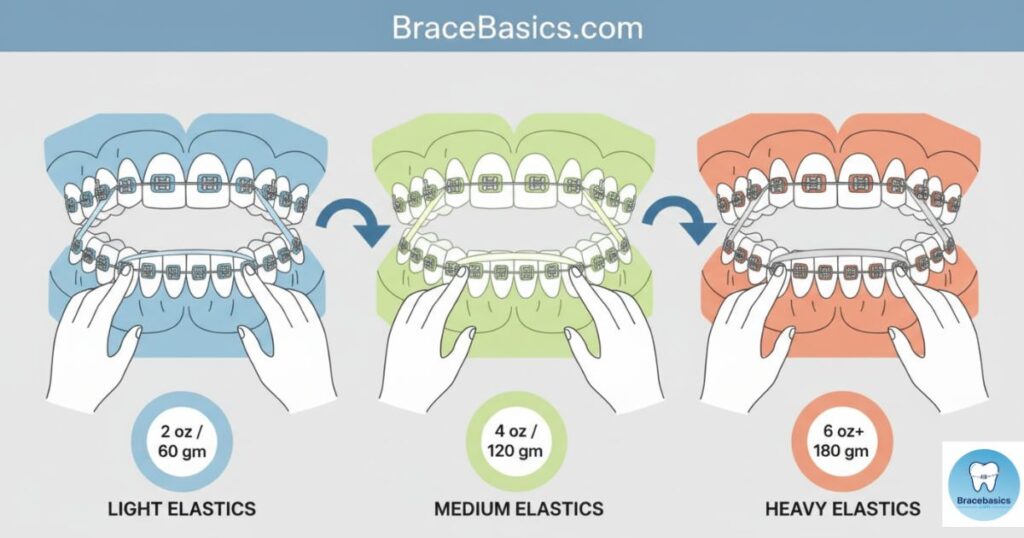
Elastics vary in strength: light, medium, and heavy. Light elastics are often used at the start of orthodontic treatment for children and teens. Medium and heavy elastics apply stronger force for complex corrections. As an orthodontist, I adjust force levels depending on how much movement is needed.
Size
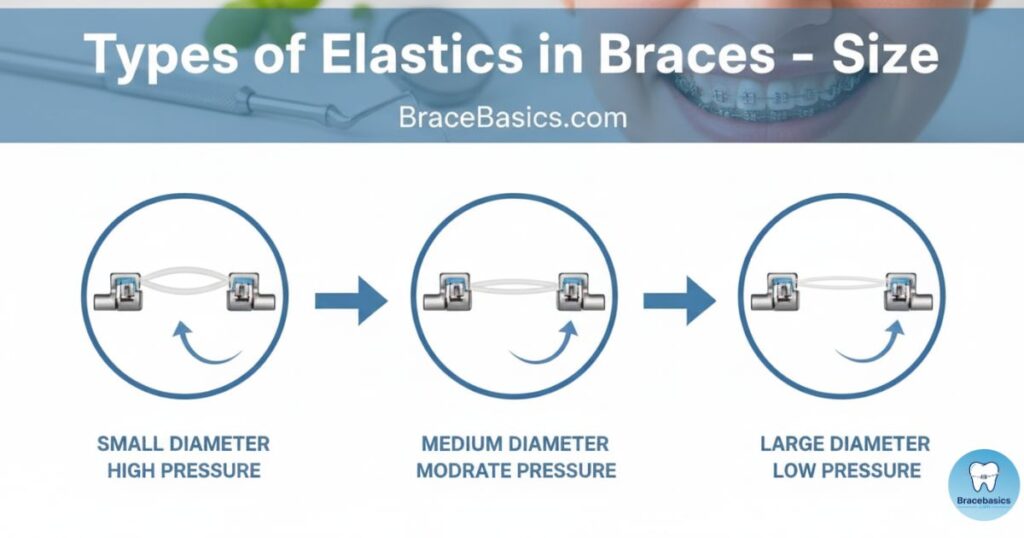
Rubber bands also come in different diameters. Smaller elastics stretch less, giving stronger pull, while larger ones provide gentler movement. Each patient’s case requires a unique combination to control the teeth alignment process effectively.
Material
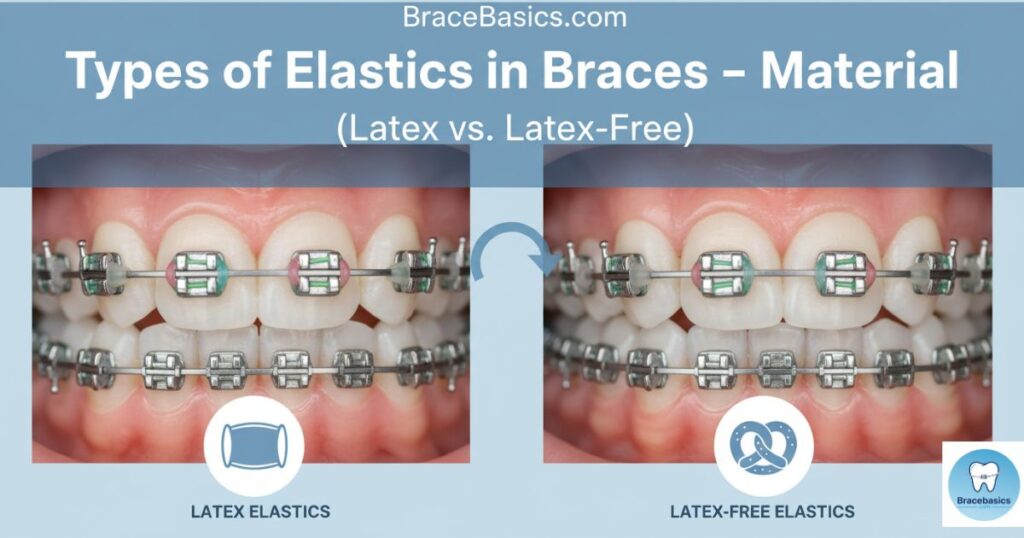
Most elastics are made of latex, but latex-free elastics are available for patients with allergies. Both work equally well in teeth straightening, though latex elastics tend to retain elasticity longer.
Use
Elastics can be worn in many ways: single bands for minor shifts, inter-arch elastics connecting top and bottom teeth, or cross elastics correcting sideways shifts. Your orthodontist chooses the configuration based on your exact bite issue.
When Do You Start Wearing Rubber Bands for Braces?
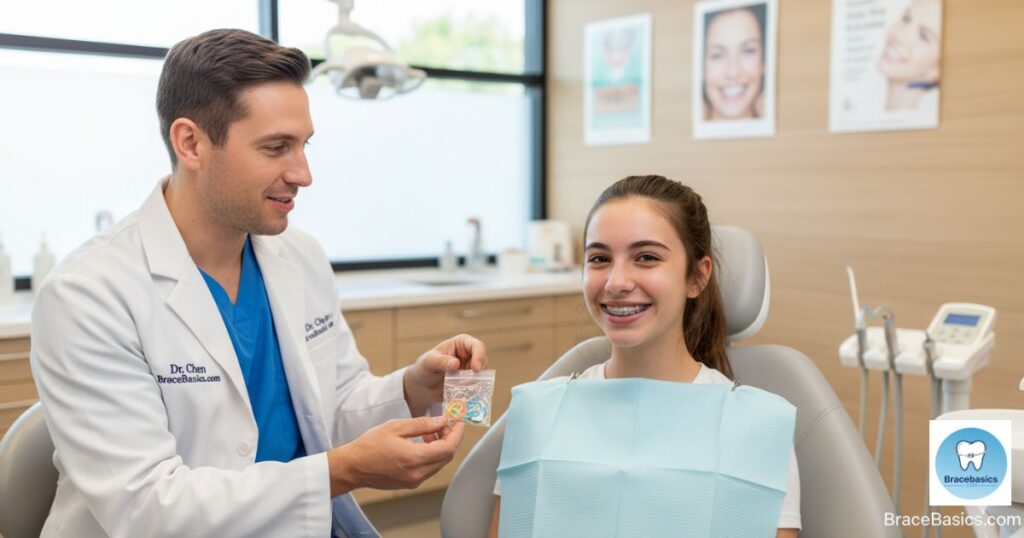
Most patients don’t wear elastics immediately. Typically, they are added in the second or third stage of braces treatment, once initial alignment is achieved. At this stage, the focus shifts from straightening teeth to correcting the bite.
The timing depends on your case. For example, a child with crowding may not need elastics until halfway through treatment, while a teen with an overbite might need them earlier. In every case, orthodontist recommendations determine when elastics become essential.
How Long Do Orthodontic Rubber Bands Stay On?
Patients often ask how many hours a day elastics should stay in. The answer is: almost all the time. As an orthodontist, I usually recommend 20 to 22 hours of wear daily. The only times you should remove them are during meals or brushing. Yes, you must remove rubber bands before meals and brushing, then put in a fresh set right after.
Treatment duration varies. Some patients wear elastics for just a few months, while others need them for a year or more. The key is consistency. Skipping days slows the process, so wearing elastics as prescribed can even mean rubber bands speed up alignment process.
How Long Do You Have to Wear Braces?
Can You Eat with Rubber Bands on Your Braces?

Technically, you can chew with elastics in, but I don’t recommend it. Eating stretches and weakens the bands, making them less effective. Also, food can stick to them and increase the risk of cavities.
Instead, follow this guideline: remove elastics before meals, enjoy your food, and then replace them. This small habit improves both dental braces care and the success of your treatment.
How to Brush Teeth with Braces?
Are There Any Side Effects?
Wearing elastics isn’t painful, but mild soreness is common, especially in the first week. That’s normal — it means your teeth and jaw are adjusting. Over-the-counter pain relievers and soft foods can help during this time.
Risks occur if elastics aren’t worn correctly. Incorrect placement can move teeth the wrong way. That’s why orthodontists give patients charts, instructions, or even a hook tool for inserting rubber bands. Following these directions prevents delays in the teeth alignment process.
The Dangers of DIY Orthodontics
I must emphasize: never attempt homemade braces. Patients sometimes try using hair ties or office rubber bands to close gaps. This is extremely dangerous. Such materials cut into the gums, loosen teeth, and can even cause permanent loss.
Only use orthodontic appliances prescribed by your orthodontist. DIY methods risk damaging your bite and costing far more in repair later.
Caring for Your Teeth While Wearing Braces with Rubber Bands
Good oral hygiene with braces is vital. Elastics collect food particles, so brushing after meals is a must. Always floss daily and use an interdental brush to clean around brackets and wires.
Patients often ask about mouthwash. Yes, fluoride rinses help strengthen enamel, which protects against decay. Remember, avoid sticky, hard, and crunchy foods with braces, as they can break bands or brackets. These habits are part of braces maintenance and protect the investment in your smile.
What to Do if the Elastics Come Off
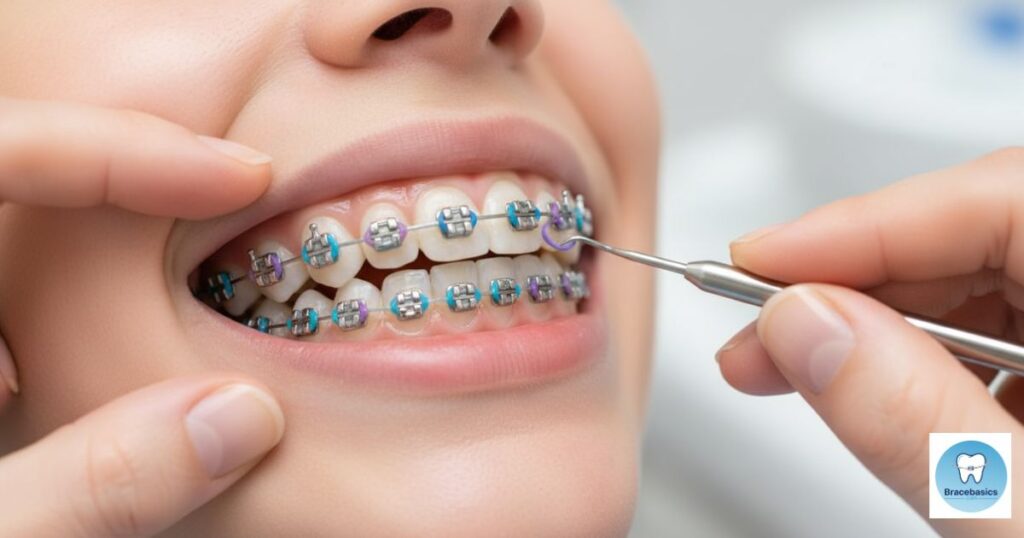
Elastics can pop off while eating, yawning, or speaking. If one comes off, simply replace it with a new one immediately. Always carry spare bands with you.
If you run out, contact your orthodontist right away. Never try to improvise with non-dental materials. Prompt replacement ensures your orthodontic treatment for children and teens or adults stays on track.
Alternatives to Braces with Elastics
Power Chains
Power chains are linked elastics that close gaps between teeth. They are different from single elastics because they connect multiple teeth at once. These chains are powerful for spaces but don’t replace rubber bands for braces in correcting bite.
Headgear
Headgear is less common today but still used for severe jaw problems. Unlike elastics, which are worn inside the mouth, headgear is an external device. It helps in cases where braces help improve speech and bite issues aren’t manageable with elastics alone.
Temporary Anchorage Devices (TADs)
TADs are small titanium screws placed in the jawbone. They act as anchors for tooth movement. TADs are modern and very effective in complex cases. However, most patients do well with traditional elastics, making them the first choice in the teeth alignment process.
Case Study: Emily’s Smile Transformation
Emily, a 15-year-old patient, came to my office with a severe overbite. She had dental braces placed, and after six months of alignment, I prescribed diagonal elastics. At first, Emily found them uncomfortable, but she followed instructions.
Within eight months, her bite was corrected. Her parents noticed not just straighter teeth but also how straighter smile improves self-confidence. Emily herself said, “Wearing elastics wasn’t fun, but seeing my new smile made it worth it.” This is the real benefits of using rubber bands with braces.
Takeaway
So, what are rubber bands for braces? They are small, powerful aids that apply extra force for teeth movement, helping achieve a balanced bite. From overbites to crossbites, elastics guide teeth and jaws into their healthiest positions.
The oral health benefits of braces go far beyond looks. Straight teeth are less prone to gum disease and decay, and a balanced bite makes chewing and speaking easier. Ultimately, braces improve oral health and appearance, giving you a confident smile that lasts a lifetime.
As an orthodontist, my best advice is simple: follow instructions, wear elastics consistently, and never skip days. With proper care, braces help improve speech and bite while delivering long-term results you’ll love.
FAQs
What is the point of rubber bands braces?
The main point of rubber bands for braces is to fix bite problems. Braces alone move teeth, but elastics apply extra force for teeth movement that brackets and wires cannot achieve. They help align the upper and lower jaws so your bite fits together correctly.
Do elastics move teeth or jaw?
Elastics move both teeth and the jaw, depending on how they’re worn. When attached between upper and lower teeth, they guide the jaw alignment and correct overbites, underbites, or crossbites. They also shift teeth into their final positions as part of the teeth alignment process.
How long do you wear rubber bands on braces?
Most orthodontists recommend wearing elastics 20 to 22 hours a day. You should remove them only when eating or brushing, then replace them immediately. The full time frame varies by case, but patients usually need elastics for several months to a year during their braces treatment.
Are rubber bands the last stage of braces?
Rubber bands are often used in the final stage of braces treatment, but not always. For many patients, elastics are added in the middle stages to start correcting bite problems. In some cases, they are the last step before braces come off, fine-tuning the bite and ensuring a perfect fit.
How We Reviewed This Article
This article was written from the perspective of an experienced orthodontist with years of clinical practice. Information is based on:
| Source | Key Insight |
| American Association of Orthodontists (AAO) | Guidelines on elastic wear time |
| Journal of Clinical Orthodontics | Studies on elastics improving bite correction |
| Mayo Clinic | Patient guidance on dental braces care |
| Clinical case reports | Real-life examples of successful smile confidence braces |
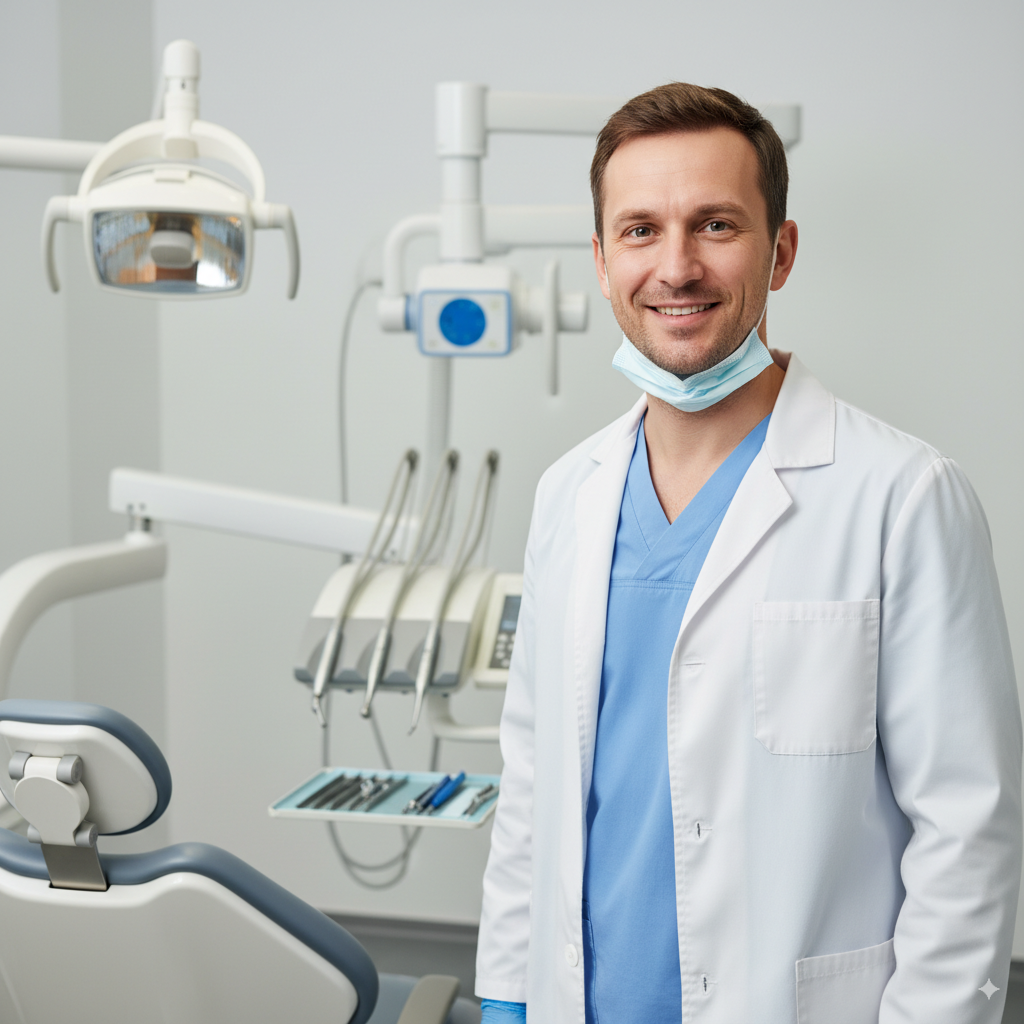
Hi, I’m Dr. Martin, the founder of BracsBasics.com. With years of experience in orthodontics, I’ve made it my mission to simplify braces care for patients of all ages. Here, you’ll find easy-to-understand advice, practical tips, and reliable resources to make your braces journey smoother, healthier, and stress-free. My goal is to help you smile with confidence every step of the way.
